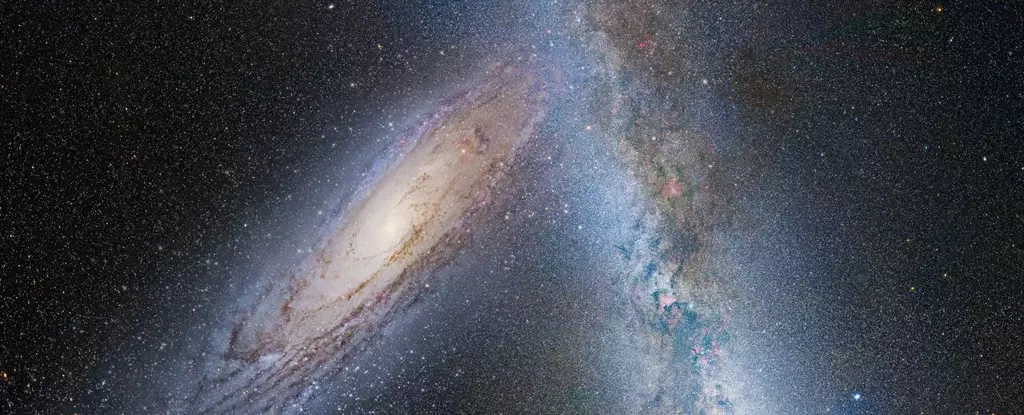The Milky Way and Andromeda galaxies are on a collision course, with Andromeda rapidly approaching at 110 kilometers per second. While previous studies have predicted a collision as nearly inevitable, new research suggests that the odds of a collision occurring within the next 10 billion years are closer to 50/50.
Simulating Galactic Movements
Researchers from the University of Helsinki and Durham University used data from the Gaia and Hubble space telescopes to simulate the movements of not only the Milky Way and Andromeda but also the Large Magellanic Cloud and the Triangulum Galaxy. When considering different combinations of these galaxies, the likelihood of a collision varied from one-third to over 50 percent.
If a collision does occur between the Milky Way and Andromeda, the estimated time for the merger is over 7.6 billion years in the future. This timeframe is longer than previously thought, giving more time for the galaxies to evolve separately. The uncertainty surrounding the future of the Local Group suggests that both a merger and the galaxies surviving unscathed are equally probable outcomes.
While the idea of galaxies colliding may sound catastrophic, the actual impact is unlikely to affect life on Earth significantly. The vast empty space between stars means that star collisions are improbable. Instead, the gravitational interactions would lead to the formation of a new elliptical galaxy, known as “Milkomeda.” Alternatively, the Milky Way and Andromeda may pass each other by, continuing to evolve independently for eons.
Despite earlier predictions of a collision, the new research emphasizes the uncertainty of the timeline for the Milky Way and Andromeda galaxies. More data, including upcoming releases from the Gaia mission, could provide further insights into the fate of these galaxies. Projections of an imminent galactic merger may be premature, highlighting the need for continued research in this area.
The future of the Milky Way and Andromeda galaxies remains uncertain. While a collision between the two is a possibility, it is not a foregone conclusion. The evolving understanding of galactic dynamics and the complexity of interactions within the Local Group suggest that multiple outcomes are possible. As our knowledge of these galaxies grows, so too will our understanding of their ultimate fate.


Leave a Reply